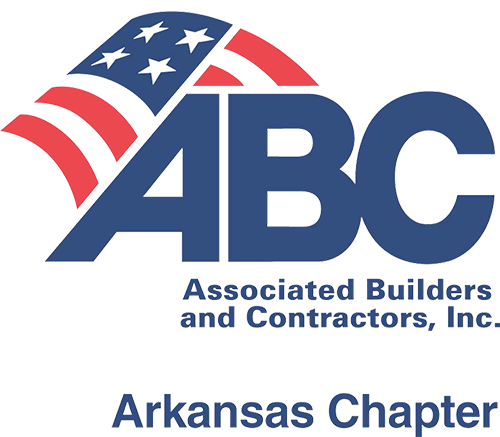Your home’s electrical panel might seem like a mystery box tucked away in the garage or basement, but it serves a vital purpose. That metal cabinet with rows of switches controls where electricity flows throughout your space. Every breaker inside that panel connects to a specific circuit, usually tied to one area, a group of outlets, or a specific appliance.
Labeling the panel helps when the lights suddenly cut out or an outlet stops working. Instead of flipping switches blindly, you can go straight to the source. It also saves time during repairs, maintenance, or emergencies.
Staley Electric is here to break down how you should label your electrical panel! Give us a call with any questions or to book an appointment. We offer panel and circuit breaker service, lighting and home automation, and more.
How Your Home’s Electrical Panel Works
Electricity enters your home through a service line and heads into the main electrical panel. This panel holds circuit breakers, which act like automatic safety switches. If a circuit gets overloaded or something goes wrong, the breaker trips and cuts off power. That’s how fires and damage get avoided before they even start.
Each breaker connects to a circuit that powers part of your home. That might include overhead lights, wall outlets, appliances, or even your HVAC system. Some circuits cover a single room. Others connect to specific appliances like the oven, dryer, or water heater. This makes proper labeling helpful because you instantly know what each switch controls.
Common Issues with Unlabeled or Poorly Labeled Panels
An unlabeled or confusingly marked electrical panel can create some real headaches and even dangerous situations.
Picture this: a circuit trips, and suddenly, half your kitchen is dark while you’re in the middle of preparing dinner. Fumbling around in the dark, trying to guess which breaker to flip, is frustrating and wastes valuable time. In a more serious scenario, like an electrical emergency, quickly shutting off the power to a specific area is critical for safety. A poorly labeled panel also makes any future electrical work more complicated and time-consuming for electricians.
What You’ll Need to Label Your Panel
Before you dive into this project, gathering a few simple supplies will make the job go smoothly. Having everything on hand means you can work methodically without interruptions. You probably have most of these items around your home already.
- Flashlight or headlamp
- Label maker or blank sticky labels
- Permanent marker or pen
- Notebook or printed grid for notes
- Smartphone (for notes, photos, or voice memos)
- Helper (optional but very useful)
- Plug-in device (like a lamp or phone charger) to test outlets
Guide to Making the Electrical Panel Labels
Turn Off All Electronics and Appliances
To begin, you’ll want a clear starting point for testing each circuit. Go through your home and turn on all the lights in every room. Also, make sure to plug in your testing device, like a nightlight, into every single outlet you can find. This includes checking outlets in hallways, behind furniture, and even outdoors so you can be certain what each breaker controls.
Test Each Breaker One at a Time
With your helper stationed in the house, you can start at the top of your electrical panel and flip the first breaker to the “off” position. Your partner can then walk through the house and identify which lights and outlets have lost power. This methodical process is the core of accurately mapping out your home’s circuitry.
Write Down the Location or Appliance for Each Circuit
As your helper calls out what has turned off, you should meticulously record this information next to the corresponding breaker number on your notepad or spreadsheet. Be specific in your descriptions; instead of just “Kitchen,” you might write “Kitchen Counter Outlets” or “Kitchen Lights.” Major appliances like a refrigerator or an electric dryer will typically have their own dedicated circuit.
Use a Label Maker or Printed Labels
Once you have identified every circuit, you can create your permanent labels. Using a label maker is a fantastic option because it produces clear, legible, and uniform labels that are easy to read. If you don’t have a label maker, you can create a template on your computer, print it on quality sticker paper, and cut the labels to size.
Create a Master Directory Sheet
For an extra layer of clarity and convenience, create a master directory sheet that you can post on the inside of the panel door. This typed or neatly written document will list all the breaker numbers with their corresponding locations or appliances. This provides a clean, at-a-glance overview of your entire electrical system, which is incredibly helpful for you, your family, and any future service professionals.
Best Practices for Clear and Accurate Labeling
Use specific, descriptive terms that anyone can understand. Instead of saying “Office,” consider “Downstairs Office Near Garage.” Avoid abbreviations or initials that might confuse future residents or contractors. If a breaker covers multiple rooms, list each one instead of saying “Multiple.”
Update labels whenever you do renovations, move appliances, or notice a change in how a circuit behaves. If you hire an electrician for major work, ask them to help confirm or adjust labels while they’re there. Clear labels add value to your home, both for convenience and safety.
When to Call a Professional Electrician
If your panel feels overwhelming, don’t worry — this happens more often than you think. Homes with outdated wiring, double-tapped breakers, or circuit overloads should be looked at before diving into DIY labeling. Electricians can help confirm what each breaker controls and identify any hidden hazards.
Also, if you notice buzzing noises, flickering lights, or warm breakers, step away from the panel and give us a call. These could be signs of a deeper electrical problem that labeling won’t fix. It’s always safer to bring in someone experienced when things seem off.
Call For More Home Electrical Tips & Services
At Staley Electric, we believe home safety and comfort go hand-in-hand. A properly labeled panel brings peace of mind and makes life easier during unexpected outages or future upgrades. If you’d rather have an expert handle the process, or if you’ve got questions about your setup, we’re ready to help.
Give us a call to schedule an inspection or ask about other home electrical services. We’ve been working with Arkansas homeowners for decades, and we treat every panel with the care it deserves. Let’s get your system organized and safe, one breaker at a time.







